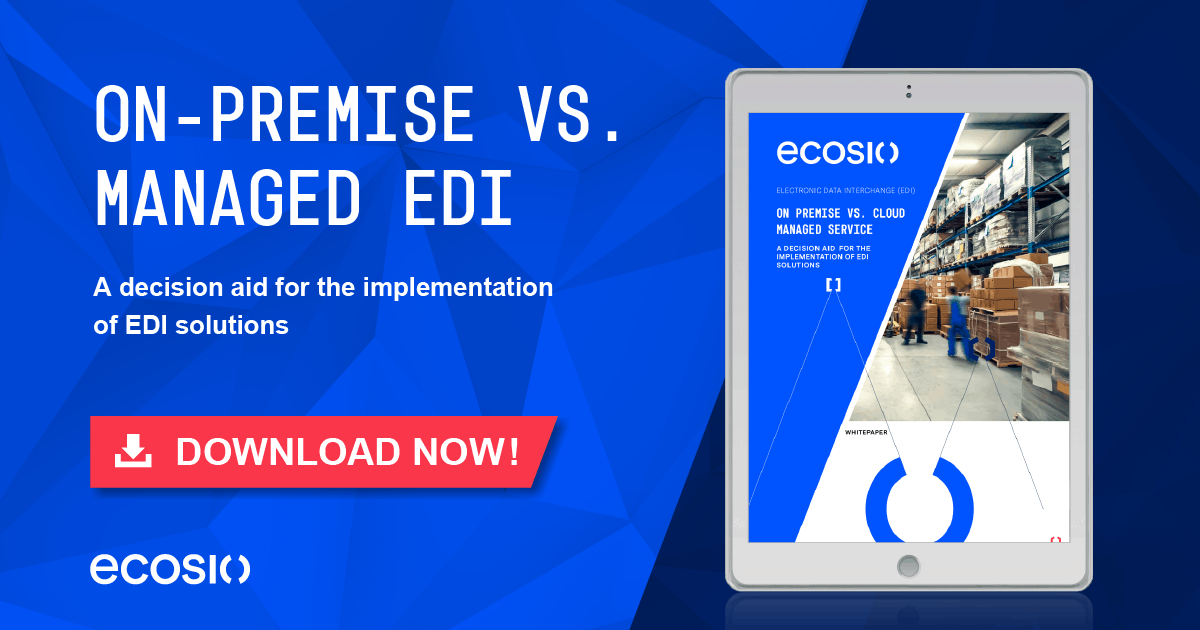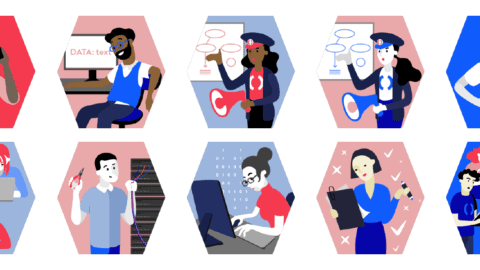The standard maintenance of SAP Process Integration and Orchestration (SAP PI & SAP PO) releases 7.31 and 7.40 will expire on 31 December, 2020. The current release, 7.50, will thus become mandatory, which means that users of the Seeburger PI Adapter, whose regular maintenance will expire at the end of 2021, will have to take action.
The Seeburger PI adapter enabled EDI converter functions, the use of different protocols (such as AS2, SFTP etc.) and message splitting. Due to the end of maintenance, critical B2B functionalities (routing and mapping) will no longer be possible.
What are my options?
In order to guarantee future-proof operation, a corresponding migration should be planned and implemented in good time. There are several options:
1) Local EDI converter
It is still possible to use a local converter. However, this approach has many disadvantages compared to a cloud-based solution.
An on-premise solution requires significant internal EDI expertise. The ongoing maintenance of the converter must be carried out by the company itself, including installation of any updates that are due. This makes converter solutions vulnerable to new upgrades and changes. Scalability, future-proofing and reliable operation are therefore not guaranteed. The Seeburger PI adapter replacement currently demonstrates the problems that arise in this context.
Some difficulties also stem from the point of view of business continuity management. Converter solutions bear a one-point-of-failure risk, since systems are neither designed to be redundant nor can they be accessed via the cloud. Error management, as well as new mappings and routings, must also be handled by internal teams.
Although the costs for this are slightly lower in the short term, there are disadvantages in the long term compared to a managed EDI solution. For a detailed cost breakdown using an example, please read our white paper on this subject.
2) B2B add-on from SAP
Another alternative to the Seeburger PI adapter would be the B2B add-on developed by SAP itself. This is a fairly comprehensive solution for EDI-based B2B communication. It provides mapping functions (including mapping templates for EDIFACT ANSI X.12 and TRADACOM). EDI message splitting is supported as well as number range management and acknowledgement handling.
For data exchange with partner systems, SAP PI uses various communication paths and adapters with the SAP B2B add-on:
- FTP or SFTP adapter to partners via VPN or internet connections
- AS2 adapter to partners via the internet
- OFTP(2) to OFTP partners (point-to-point connection)
- X400 adapter to X.400 mailboxes
In principle, this eliminates some of the disadvantages of a local converter solution, but this option is not without its pitfalls, especially on the technical side.
Communication with value-added networks (VANs) is not possible out-of-the-box, which restricts companies in their B2B network. API connections are also not supported, which has disadvantages in terms of message transmission and seamless EDI integration. For example, end-to-end monitoring is only possible to a limited extent because the IDoc status is not converted correctly by default. A full text search in all types of EDI messages is also not possible.
The operating costs of the SAP add-on are roughly the same as for a local EDI converter, since EDI operation must also be carried out within the company itself. Complex partner setup and management must be implemented internally, as must new or updated mappings. The SAP B2B add-on also shows weaknesses with regard to e-invoice regulations. For example, there is no Peppol adapter, which must be implemented externally.
3) Fully managed EDI in the cloud – a future-proof solution
The Seeburger PI adapter alternative with the most benefits is a migration to a cloud-based, fully managed EDI solution. EDI providers such as ecosio take care of all EDI needs and ensure scalability and future-proof operation, including all mappings, error handling, partner onboarding and legally compliant e-invoicing. With such a solution pressure on internal teams is lifted and the continued efficiency of B2B connections is safeguarded.
Perhaps the most striking benefit of fully managed EDI is the comparative speed with which it enables partners to be onboarded, however. At ecosio, dedicated project managers take care of each individual customer and their entire B2B network, and have the necessary industry knowledge to react quickly to special situations. Extensive tests guarantee the operation of all communication links, while any errors that occur are automatically detected and proactively eliminated thanks to 24/7 monitoring.
The seamless integration of the EDI solution into the customer’s ERP system enables excellent user usability and message transparency (e.g. full-text search across all content). With just a single connection to the ecosio cloud-based EDI solution (our Integration Hub), all connections in a customer’s B2B network in all common formats and protocols (including VANs and Peppol) can be used reliably and e-invoicing is legally compliant.
Conclusion
The end-of-life of the Seeburger PI Adapter certainly means a change and challenge for some companies. But this change can also be a chance for companies and their B2B network. Cloud-based, fully managed EDI enables companies to experience all the advantages of EDI with minimal internal effort.
For more information on EDI and what you can do to improve your business’s B2B processes, view our white papers and webinars. Alternatively, feel free to contact us directly. We are always happy to help!
SAP ERP and SAP S/4HANA are the trademarks or registered trademarks of SAP SE or its affiliates in Germany and in several other countries.




